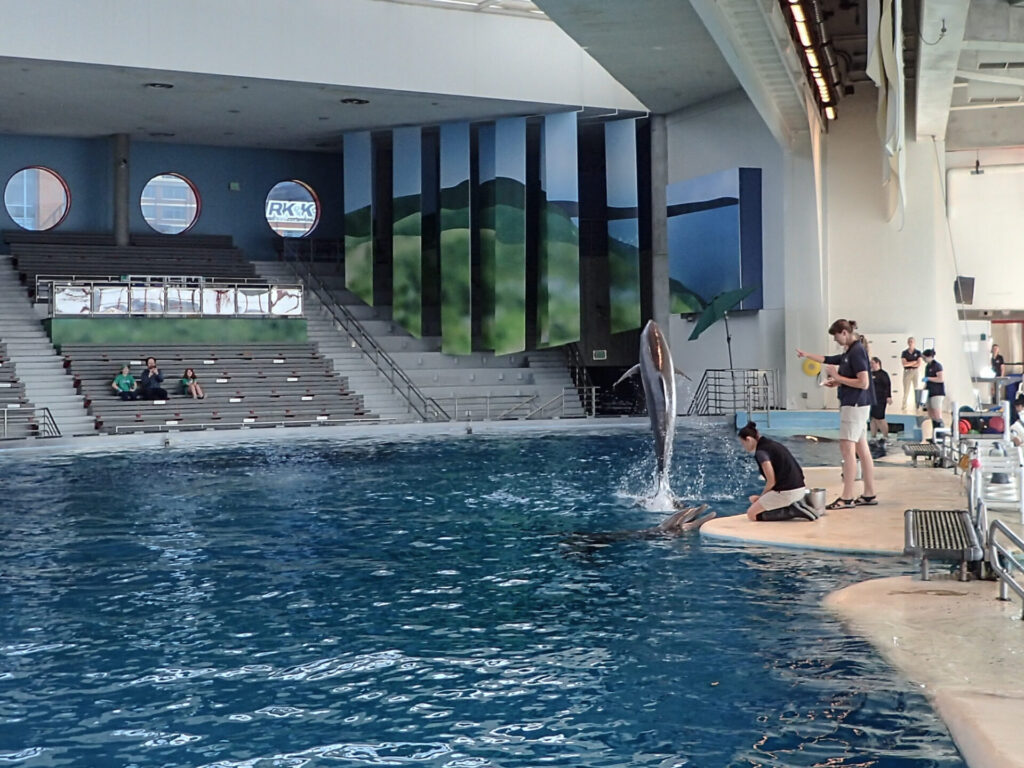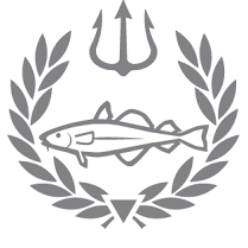On Wednesday, Holly and I, along with two other DSOs, headed to the dolphin exhibit across the skybridge with our dive gear. There, we met the marine mammals team for the exhibit section of their extraction training. The dolphins had all been closed off in the training pools in the back section of the dolphin exhibit, so we wouldn’t have to worry about them getting too close or too curious while we worked. We all filed into the pool, and Holly gave the briefing. My job was to document the training with the Aquarium’s camera, so I brought that in with me as well. Then, we all descended to the bottom of the pool. It’s 23 feet deep (according to my computer), and very wide and long, with windows along the top and another at the bottom far end. One by one, the marine mammal team took turns practicing rescuing and lifting someone from underwater. As I took pictures, I could see some of the dolphins looking in at us curiously from the gate to the back pools. I’m the first Sea Rovers intern to ever dive in this pool, and it was amazing to be so close to the dolphins and swim where they swim. I also really loved helping out with the extraction training! Once the lifts were done, we moved over to a back pool, while the dolphins moved back to the front.  There, the dolphin team practiced removing someone from the water using the extraction board. As we were packing up our gear afterwards, the other trainers came out and did some training with the dolphins, and we watched as they did jumps, specific swims, and came up on the platforms as directed by the trainers.
There, the dolphin team practiced removing someone from the water using the extraction board. As we were packing up our gear afterwards, the other trainers came out and did some training with the dolphins, and we watched as they did jumps, specific swims, and came up on the platforms as directed by the trainers.
After lunch, Holly walked me over to the Aquarium’s jelly lab a few piers over, where researcher Annie and her team take care of all different species of jellies and study their reproductive patterns. She told me that jellies have a very unique life cycle where they grow from microscopic planula to a polyp fixed to a substrate, which then flowers off into small ephyra that grow into adult jellies. Absolutely wild! I helped her feed some of the jellies, and then we pulled some microscopic planula from one of the tanks to look at under the microscope. There were so many! Then we pulled some ephyra, which were still really small, but visible with the naked eye. The ephyra pulsed under the microscope, opening and closing their flower-like bodies to scootch around in the drops of water on the microscope slide. Thank you Annie for showing me around the jelly lab!
– Sofia
